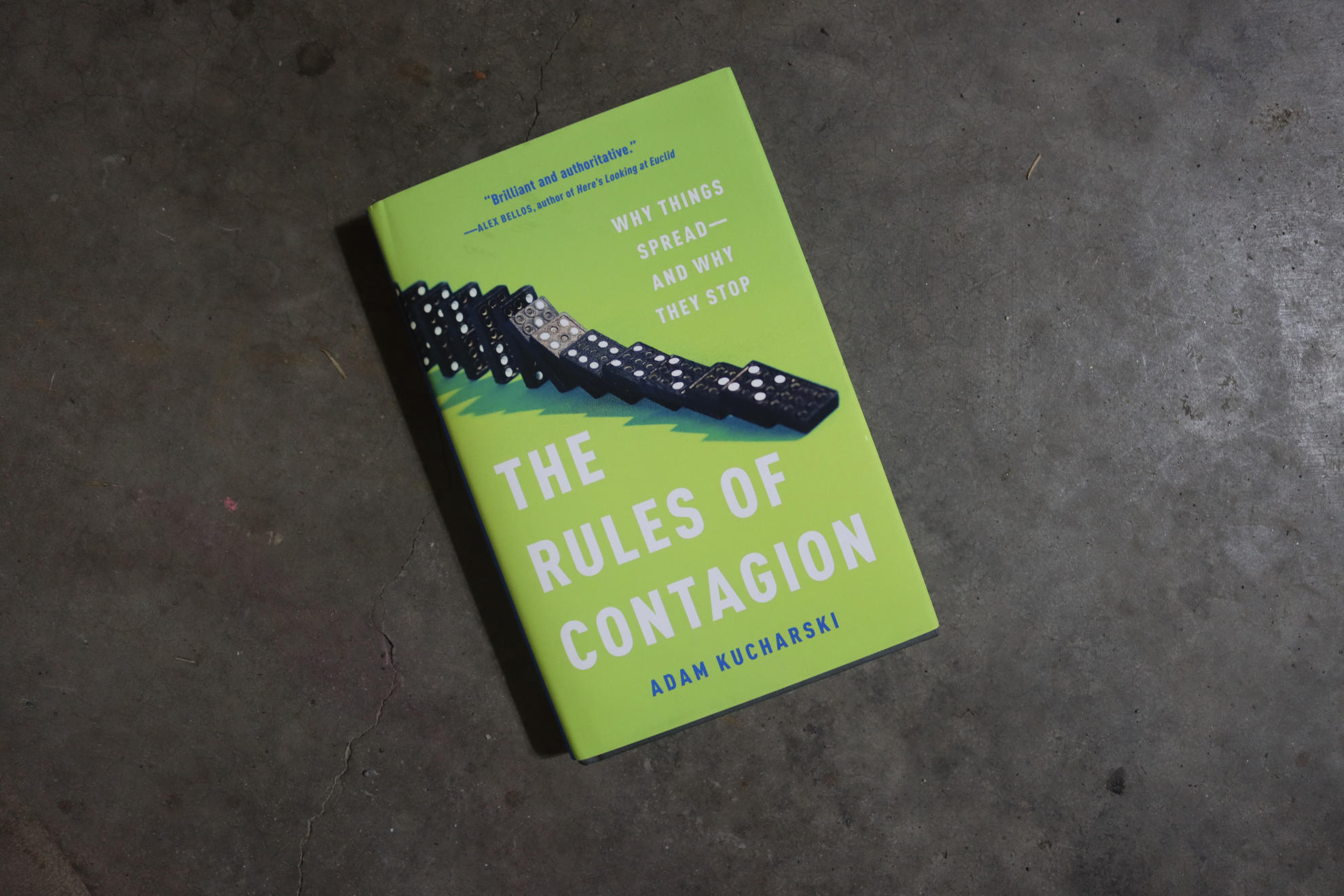While my intention wasn’t to purchase a book about pandemics and how they spread during a pandemic, that’s how 2020 happened. I had ordered this book just before COVID-19 became a thing to worry about in Canada and it came while we were in full swing of being worried about how COVID-19 would treat Canada.
The purpose of The Rules of Contagion is to look at how things spread, from banking crashes to flu pandemics and social media messages. Adam Kucharski looks at the similarities in the spread of these types of events to show us universal rules about why things spread.
Let’s start by looking at how contagion applies to disease, but then we’ll take it further by looking at how ideas are contagious.
## Why Things Spread and Why They Stop
To keep it short, diseases (and ideas) spread because people are not yet immune to them[^1]. This raises a great question around how to stop the spread of conspiracy theories. While Kucharski says that you can stop an epidemic with an evidenced base about the causes, a method for implementing solutions, and political will[^2], he offers no real advice about how this applies to conspiracy theories.
You can become immune in one of two ways, exposure to the virus or via immunization to it. Either way, your body has the right stuff to combat the virus. Kucharski shows us the graph below here.
@todo graph
### Reproduction Number
Another crucial idea to understand in the spread of ideas is the reproduction number, or R number[^4]. This is the number of new infections we’d expect a typical infectious person to generate. If R is below 1, then the disease will die out. If the R number is above 1 then the disease will continue to grow until it consumes all the people vulnerable to it.
The R number depends on 4 things[^3].
1. The **duration** of the infection. If the infection is longer there is more chances to pass it on.
2. The **opportunities** they have to pass it. How many people they see that are susceptible
3. The probability a meeting means **transmission**. Aerosol diseases have a higher chance of spread because they are in our breath. A disease like AIDS isn’t passed on being near someone because the mode is entirely different
4. The average **susceptability** of the population. As in who is immune to the disease already.
We’ve seen with COVID-19 most of the protocols put into affect in Canada have revolved around reducing the number of opportunities it has to spread to other people by reducing the people you see.
## It’s Not Just Disease Though
Now let’s take a turn away from disease and look at how ideas work. One of the big ways that creating spreads ideas is that it increases the **opportunities** that your idea has to spread. Building high quality content is similar to increasing the probability that your idea will **transmit** to others. Marketing is about finding more people that are **susceptible** to your ideas[^5].
We saw Seth Godin talk about this in The Dip when he said that in the middle of the dip in your progress you must make sure that you’re talking to the market. In fact Godin says that most of the time very little of the market has had a chance to even turn you down because they haven’t heard about you.
Increasing **opportunities** for **transmission** is the theory behind open offices. Unfortunately, according to studies cited here, open offices reduce face to face meetings by 70%[^6]. That means that you pay huge in lost productivity, while reaping almost no benefits in terms of serendipity and cross-pollination.
Finally let’s look at social media. According to Kucharski the information we are exposed to via social media is more likely to be polarized[^7]. At the same time we’re more likely to be exposed to differing opinions online[^8]. Unfortunately online conversations rarely increase our empathy and change our minds.
Both [Digital Minimalism](https://curtismchale.ca/2019/05/08/a-review-of-digital-minimalism-by-cal-newport/) and [Irresistible](https://amzn.to/3dywPRX) talked about how empathy is only built when we can see the results of our actions on people as we interact with them. In [iGen](https://curtismchale.ca/2020/02/28/igen-why-are-they-acting-they-way-they-do), Gene M Twenge, talked about the dichotomy of current generations being far more accepting of whatever you want to be, while also interacting mainly on screens and thus reducing the empathy they feel for people unlike themselves. They’ll say that helping is important and will change their social media avatar, but won’t go out into the field to help physically.
## Should You Read The Rules of Contagion by Adam Kucharski
While this was a decent book, I actually think that [Connected](https://curtismchale.ca/2018/05/17/connected-how-a-social-network-works-in-everything-from-stds-to-friendship/) is a better book about a similar topic. Specifically there as no discussion of the three degree rule (that our friends friends friends affect us). At many points I thought that introducing this rule would neatly explain a concept, but it was missed. I know the author’s read Connected, because they referenced it but they didn’t make this connection.
I’m not saying this is a bad book, but that Connected was a better. I’m not sure I’ll head back to The Rules of Contagion regularly, like I do with Connected.
Purchase The Rules of Contagion: [Independent Bookstore](https://bookshop.org/a/11916/9781541674318) | [Amazon](https://amzn.to/2Mm9U1e)
[^1]: Page 24
[^2]: Page 133
[^3]: Page 58
[^4]: Page 54
[^5]: Page 85
[^6]: Page 86
[^7]: Page 168
[^8]: Page 168
